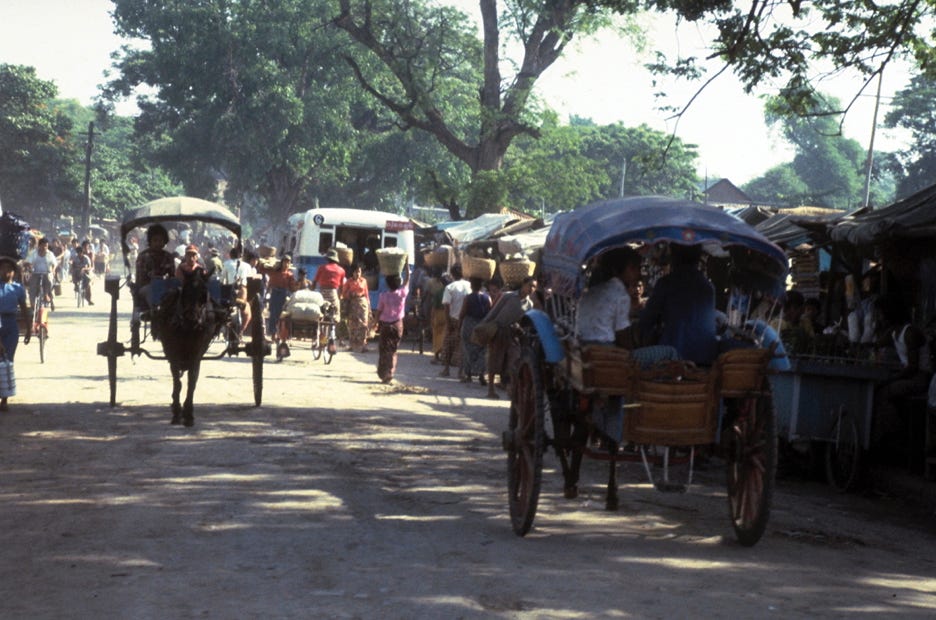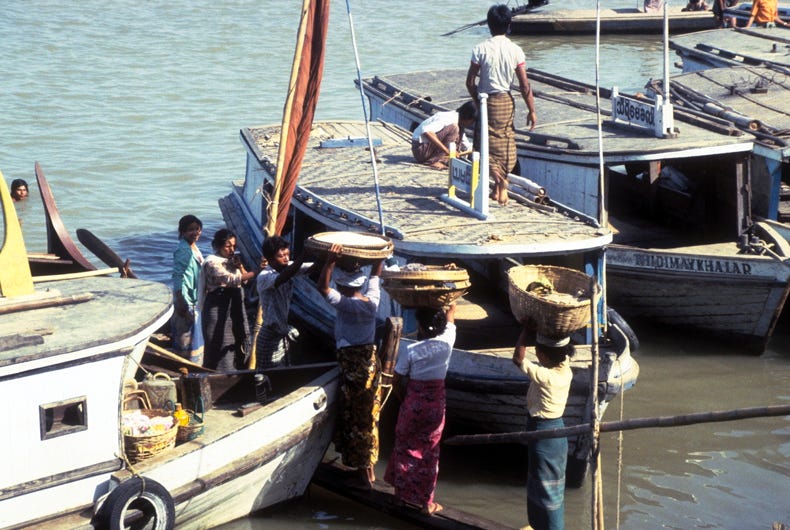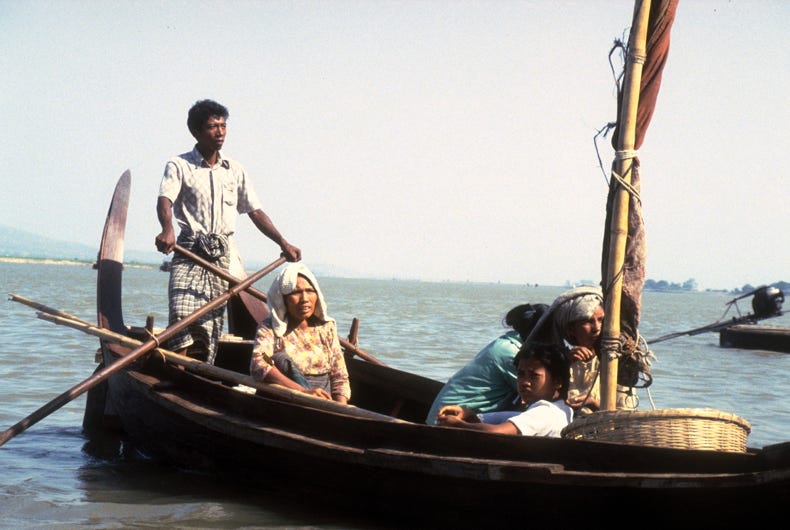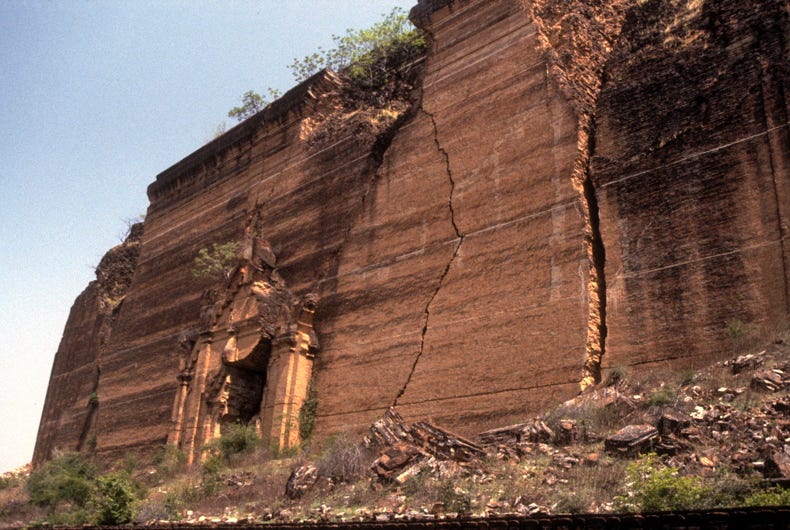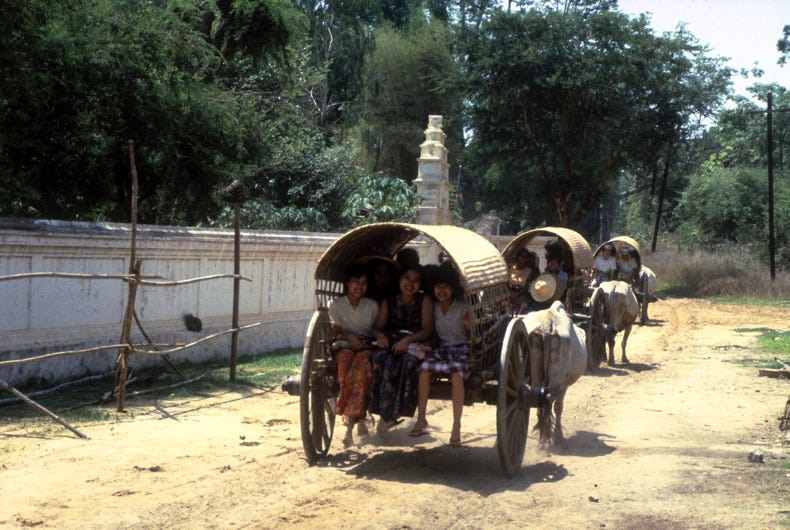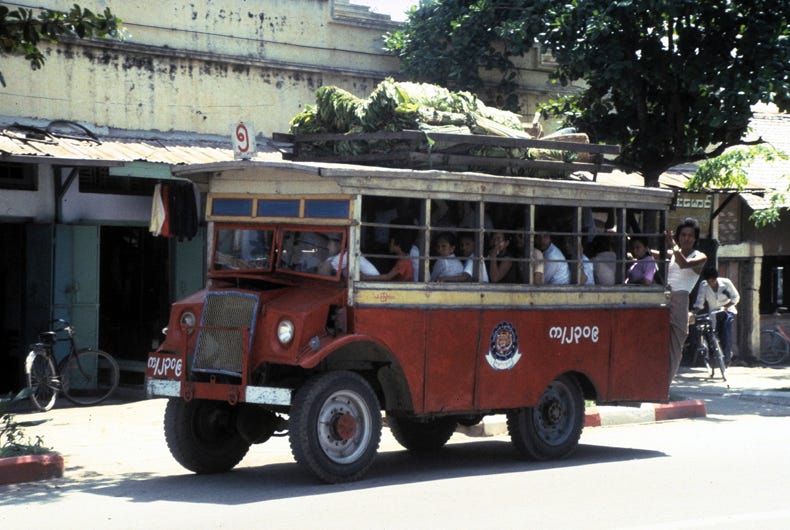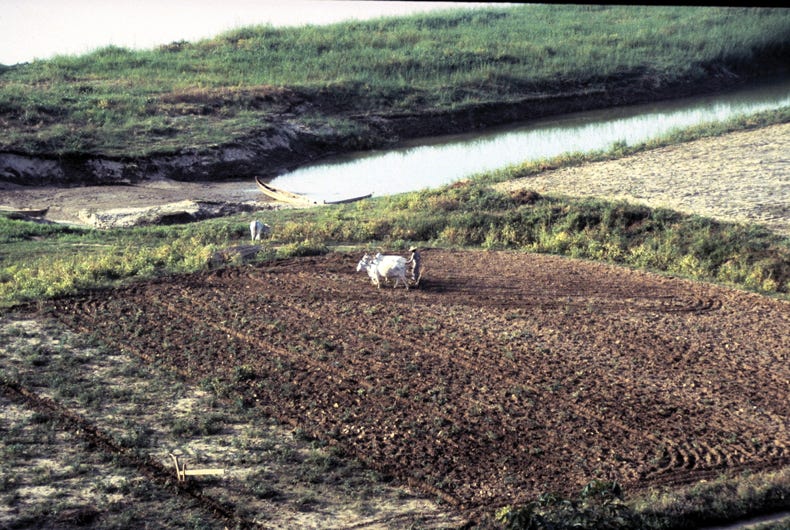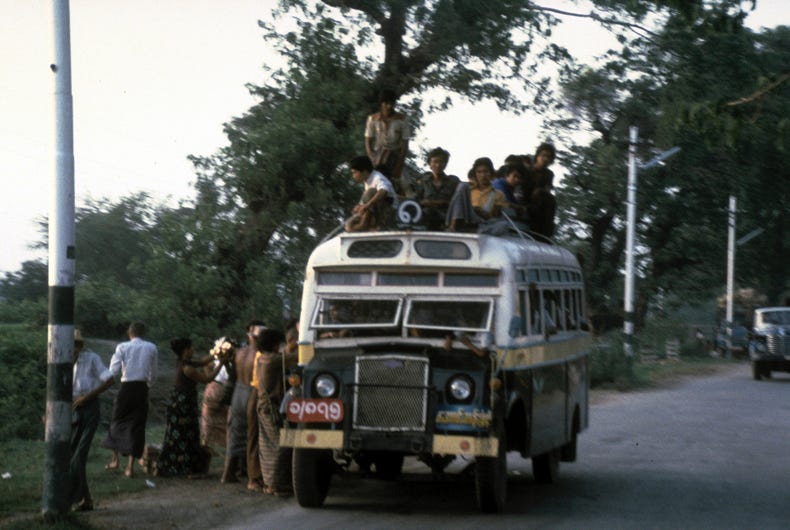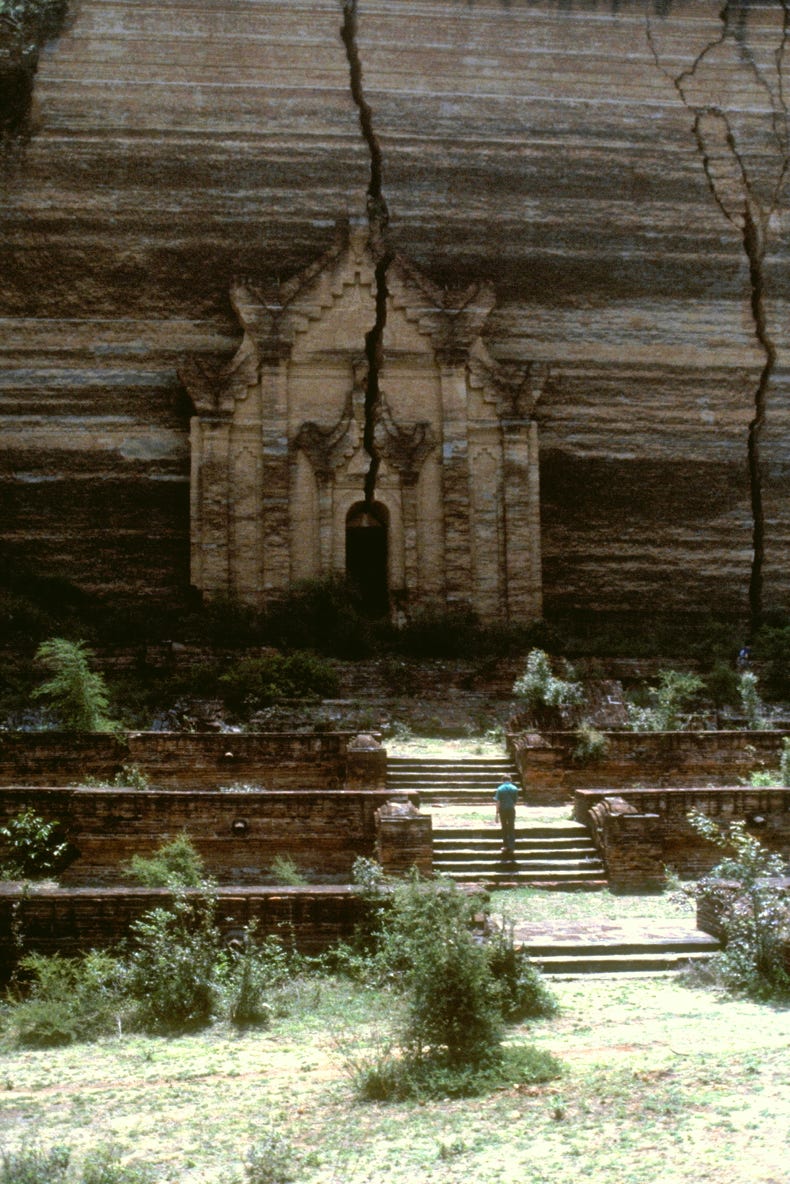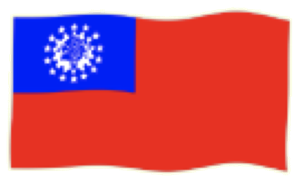

Today we embarked on a number of tours in and around Mandalay. We began by crossing through the central area of the city where we witnessed the effects of a large fire which in March 1984 (less than two months ago) destroyed about 2,000 buildings. After passing through the poorer area of the city near the flood-prone banks of the Irrawaddy River, we boarded two small boats to travel upstream to the village of Mingun. Now largely a retirement centre for Buddhist monks and nuns, the highlights of Mingun were the world’s largest intact bell (87 tonnes weight and 5 metres wide at the mouth), the earthquake damaged Mingun Pagoda, the Hsinbyume Pagoda modelled on Mount Meru, and of course the Burmese village life of markets, ox-carts, Buddhist monks and children with thanaka-bark powder covered faces.
We returned to Mandalay for lunch before travelling to the south of the city to the Maha Muni (Living Buddha) Pagoda at Arakan, a wood and ivory carving workshop, and a typical textiles factory employing girls aged eight to eighteen for $6 per week, before crossing the Ava Bridge (the only bridge over the Irrawaddy) to Sagaing, where we visited a ruined pagoda and sampled village life with surprising remnants of the American hippie cult of the 1960s! The return trip to Mandalay included a visit to a stone carving workshop which specialised in Buddha images.
A notable event of this day was the first loss of a passport by a member of the group, together with alternative identification, cash and traveller’s cheques. Subsequent comprehensive searching by the group and our Tourist Burma guide proved fruitless, and we seemed set for an extended morning of paperwork with the Australian Embassy upon arrival in Rangoon. However, to the eternal credit of Tourist Burma, the passport was located in Mandalay and flown to Rangoon for collection the night before our departure from Burma. The honesty and efficiency of the Tourist Burma officials in this matter are to be applauded and are the source of extreme gratitude for our group.
For our final evening in Mandalay, the group invited our charming guide and her delightful teenage daughters to join us for our evening meal as our guests. This meal was a highlight of the trip for the students, providing an all too rare opportunity of meeting and getting to know some Burmese people of similar ages to themselves. That the girls concerned were exceedingly pretty added to the occasion.
That evening, in one of several “writing-up” and evaluation sessions held during the trip, some students were expressing the feeling that too many pagodas were being included in the itinerary to the exclusion of “everyday life” in Burma. Despite the ignorance of the centrality of worship in Burmese life that such an opinion expressed, and the lack of ability to see the fundamental role of the pagoda not only as a centre of worship but also commerce, information exchange and community interaction, the Tourist Burma guides were very flexible in adapting the itineraries to accommodate this opinion.



